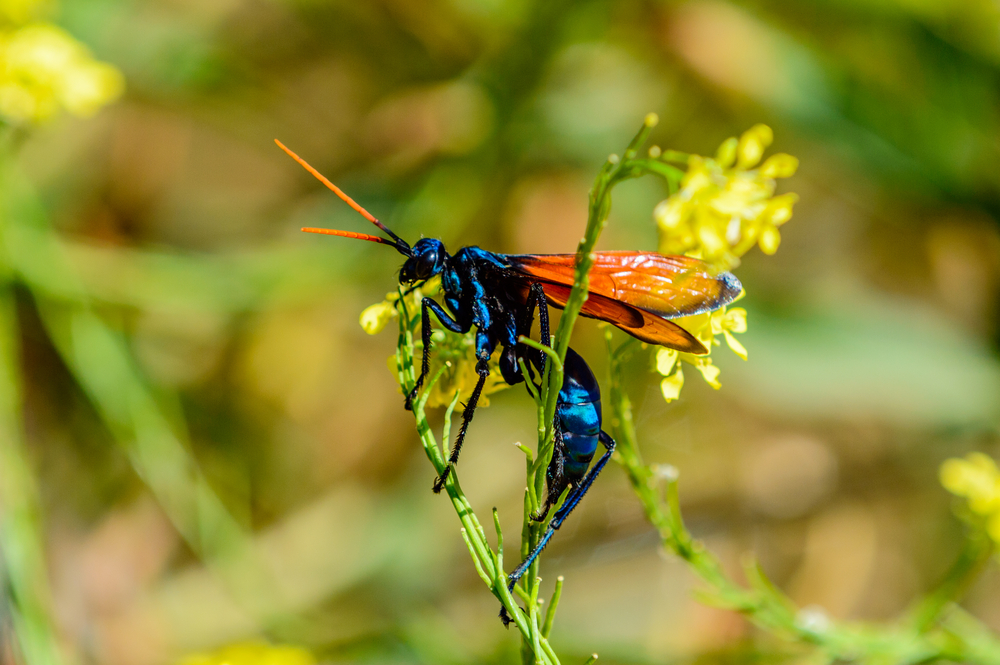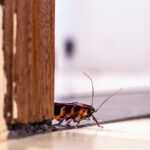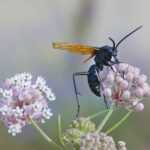Tarantula Hawk Wasp: Nature’s Most Painful Sting Explained
Discover the truth behind the Tarantula Hawk Wasp’s excruciating sting and what it feels like. Read the article to learn more about this remarkable insect.
Tarantula Hawk Wasp: Understanding the World’s Most Painful Sting
Curious about the tarantula hawk wasp? Known for its size and painful sting, this fascinating insect has a unique life cycle, hunting methods, and habitat. Learn all about it and how to handle an encounter safely.
- Tarantula hawk wasps are massive, solitary insects found in diverse habitats worldwide, except Europe and Antarctica.
- Their life cycle involves paralyzing a tarantula, laying an egg on it, and then the larva consumes the spider while keeping it alive.
- The wasps’ sting is extremely painful but short-lived; it’s best to observe them safely and avoid provoking an encounter.
What is a Tarantula Hawk Wasp?
The tarantula hawk wasp is an impressive insect that commands attention with its size and appearance. Typically measuring between 1.5 to 1.625 inches in length, these wasps are among the largest in the world. Their striking looks are hard to miss: a blackish-blue body paired with orange or dark brown wings makes them stand out in any landscape.
These wasps are versatile when it comes to their habitat. They thrive in various desert environments such as shrublands, grasslands, and arroyos. Interestingly, tarantula hawk wasps are found on every continent except Europe and Antarctica, showcasing their adaptability to different climates.
Unlike many other wasps, tarantula hawks do not build nests. Instead, they burrow into the ground or use existing cavities created by other insects. Their solitary nature means each female fends for herself, ensuring her offspring’s survival by finding a suitable host for her eggs.
The Life Cycle of a Tarantula Hawk Wasp
The life cycle of the tarantula hawk wasp is both fascinating and somewhat gruesome. It begins with the female wasp locating a tarantula, which she paralyzes with a precise sting. She then lays a single egg on the paralyzed spider’s abdomen, ensuring her larva has a fresh food source.
Once the egg hatches, the larva begins to feed on the still-living tarantula. It cleverly avoids the vital organs, prolonging the spider’s life and ensuring the meat remains fresh. This feeding process continues for several weeks, during which the larva grows and develops.
After the larva has had its fill, it pupates, undergoing a transformation within a cocoon. Eventually, an adult wasp emerges from the remains of the tarantula, ready to repeat the cycle. This life cycle is a testament to the tarantula hawk’s specialized evolutionary adaptations.
Behavior and Hunting Techniques
Tarantula hawk wasps are not just formidable hunters but also elegant creatures in their own right. During the daytime, adult wasps can often be seen around flowers, feeding on nectar and helping with pollination. However, their hunting activities typically take place at dusk, when they search for tarantulas.
The hunting technique of a tarantula hawk is a marvel of precision. The female wasp locates a tarantula, engages it in a fierce battle, and delivers a paralyzing sting with remarkable accuracy. This sting immobilizes the tarantula, allowing the wasp to lay her egg on its abdomen without resistance.
The female wasp’s ability to incapacitate a tarantula and use it as a living food source for her offspring is a prime example of nature’s ingenuity. This behavior ensures the survival of the next generation and highlights the tarantula hawk’s role in the ecosystem.
The Painful Sting
The sting of a tarantula hawk wasp is legendary, and for good reason. Ranked second on the Pain Scale for Stinging Insects, created by entomologist Justin Schmidt, it is described as one of the most excruciating experiences one can endure. Schmidt likened the sensation to a sudden, electrifying jolt that is intensely incapacitating, often causing victims to simply lay down and scream.
Despite its intensity, the pain from a tarantula hawk’s sting is relatively short-lived, typically lasting about five minutes. This is significantly shorter than the up to 24 hours of agony caused by a bullet ant sting, but those few minutes can feel like an eternity.
If you ever find yourself on the receiving end of this painful sting, it’s crucial to act quickly. Clean the affected area with soap and water, and apply a cold compress to reduce swelling and alleviate pain. If a severe allergic reaction occurs, seek immediate medical attention to prevent complications.
Where Can You Find Tarantula Hawk Wasps?
Tarantula hawk wasps are widespread, but they are particularly prevalent in certain regions. In the United States, these wasps are primarily found in the desert areas of the southwest, including the Grand Canyon, where the species Pepsis thisbe is commonly seen on the South Rim.
Beyond the state United States, tarantula hawk wasps are also abundant throughout Central America. Their presence in these regions reflects their preference for warm, arid environments where they can thrive and find ample prey.
If you’re exploring these areas, keep an eye out for their distinctive appearance and behavior. Spotting a tarantula hawk can be a thrilling experience, but always remember to observe from a safe distance.
How to Handle a Tarantula Hawk Wasp Encounter
Despite their fearsome reputation, tarantula hawk wasps are generally non-aggressive and will only sting when provoked. If you encounter one, the best course of action is to maintain a safe distance and avoid making any sudden movements. Swatting at the wasp or attempting to shoo it away can provoke an attack, so it’s best to remain calm and still.
If the wasp continues to approach, seek shelter indoors or in a vehicle to minimize the risk of being stung. Remember, these wasps are more interested in finding prey and nectar than in engaging with humans. By respecting their space, you can avoid painful encounters and appreciate the fascinating role they play in the ecosystem.
Why Choose Professional Pest Control?
Choosing professional pest control services from Responsible Pest & Scorpion Control offers numerous benefits. Their integrated pest management solutions combine prevention, monitoring, and control measures to manage pest populations effectively.
Throughout this exploration of the tarantula hawk wasp, we’ve uncovered the remarkable aspects of its biology, behavior, and the notorious sting that sets it apart. From its striking appearance and solitary lifestyle to its meticulous hunting techniques and the painful sting, the tarantula hawk is truly a marvel of nature.
It’s essential to recognize the importance of professional pest control services in managing encounters with such pests. Professional Pest Control Services can offer the expertise and solutions needed to ensure your safety and peace of mind. Respect these fascinating insects, but always prioritize your well-being by relying on professionals.
Frequently Asked Questions
What attracts tarantula hawk wasps?
Tarantula hawk wasps are drawn to the nectar of flowers like milkweed, mesquite, and soapberry trees. So, if you’re looking to attract them, those blooms are where it’s at!
Where are tarantula hawk wasps in the US?
Tarantula hawk wasps are mainly found in the deserts of the southwestern U.S., especially in places like the South Rim and inside the Grand Canyon. They thrive where their prey, tarantulas, exist.
What areas does Responsible Pest & Scorpion Control serve?
Responsible Pest & Scorpion Control covers the Greater Metro Phoenix area, as well as Mesa and Tucson, AZ. If you’re in these areas and need scorpion control, they’ve got you covered!
What type of pest control services does Responsible Pest & Scorpion Control offer for residential properties?
Responsible Pest & Scorpion Control specializes in residential pest control to help keep your home pest-free, leveraging their experience and meticulous approach.
How does Responsible Pest & Scorpion Control approach commercial pest control?
Responsible Pest & Scorpion Control gets the job done without messing up your work vibe. They really focus on making sure pests are managed effectively and discreetly.



